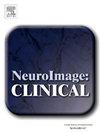Hypoperfusion regions linked to National Institutes of Health Stroke Scale scores in acute stroke
IF 3.4
2区 医学
Q2 NEUROIMAGING
引用次数: 0
Abstract
Background
The National Institutes of Health Stroke Scale (NIHSS) is widely used to assess stroke severity. While prior studies have identified subcortical regions where infarcts correlate with NIHSS scores, stroke symptoms can also arise from hypoperfusion, not just infarcts. Understanding the potential for neurological recovery post-reperfusion is essential for guiding treatment decisions. The goal of this study was to identify brain regions where hypoperfusion correlates with NIHSS scores, using computed tomography perfusion (CTP) scans in cases of acute ischemic stroke.
Methods
In this prospective observational study, we analyzed CTP scans and NIHSS scores from 89 patients in the acute phase. We employed a unique support vector regression approach to overcome limitations of traditional mass univariate analyses. Additionally, we used stability selection to identify the most consistent features across subsets, reducing overfitting and ensuring robust predictive models. We verified the consistency of results through nested cross-validation.
Results
Both cortical and subcortical areas, including white matter tracts, showed associations with NIHSS scores. These regions aligned with functions such as language, spatial attention, sensory, and motor skills, all assessed by the NIHSS.
Conclusions
Our findings reveal that hypoperfusion in specific brain regions, including previously underreported cortical areas, contributes to NIHSS scores in acute stroke. Moreover, this study introduces a novel brain mapping approach using CTP imaging and stability selection, offering a more comprehensive view of acute stroke impairments and the potential for recovery before structural reorganization occurs.

在急性中风中,低灌注区与美国国立卫生研究院卒中量表评分相关
背景:美国国立卫生研究院卒中量表(NIHSS)被广泛用于评估卒中严重程度。虽然先前的研究已经确定了脑梗死与NIHSS评分相关的皮质下区域,但脑卒中症状也可能由灌注不足引起,而不仅仅是脑梗死。了解再灌注后神经恢复的潜力对指导治疗决策至关重要。本研究的目的是利用计算机断层扫描(CTP)在急性缺血性卒中病例中识别脑灌注不足与NIHSS评分相关的脑区域。方法在这项前瞻性观察研究中,我们分析了89例急性期患者的CTP扫描和NIHSS评分。我们采用了一种独特的支持向量回归方法来克服传统的大规模单变量分析的局限性。此外,我们使用稳定性选择来识别子集之间最一致的特征,减少过拟合并确保预测模型的鲁棒性。我们通过嵌套交叉验证来验证结果的一致性。结果皮质和皮质下区域,包括白质束,都与NIHSS评分相关。这些区域与语言、空间注意力、感觉和运动技能等功能相一致,这些都是由NIHSS评估的。结论我们的研究结果表明,特定脑区域的灌注不足,包括以前未被报道的皮质区域,有助于急性卒中的NIHSS评分。此外,本研究引入了一种新的脑成像方法,使用CTP成像和稳定性选择,为急性卒中损伤和结构重组发生前的恢复潜力提供了更全面的视角。
本文章由计算机程序翻译,如有差异,请以英文原文为准。
求助全文
约1分钟内获得全文
求助全文
来源期刊

Neuroimage-Clinical
NEUROIMAGING-
CiteScore
7.50
自引率
4.80%
发文量
368
审稿时长
52 days
期刊介绍:
NeuroImage: Clinical, a journal of diseases, disorders and syndromes involving the Nervous System, provides a vehicle for communicating important advances in the study of abnormal structure-function relationships of the human nervous system based on imaging.
The focus of NeuroImage: Clinical is on defining changes to the brain associated with primary neurologic and psychiatric diseases and disorders of the nervous system as well as behavioral syndromes and developmental conditions. The main criterion for judging papers is the extent of scientific advancement in the understanding of the pathophysiologic mechanisms of diseases and disorders, in identification of functional models that link clinical signs and symptoms with brain function and in the creation of image based tools applicable to a broad range of clinical needs including diagnosis, monitoring and tracking of illness, predicting therapeutic response and development of new treatments. Papers dealing with structure and function in animal models will also be considered if they reveal mechanisms that can be readily translated to human conditions.
 求助内容:
求助内容: 应助结果提醒方式:
应助结果提醒方式:


